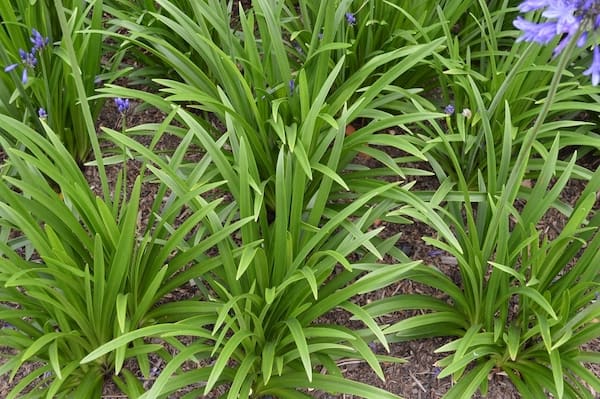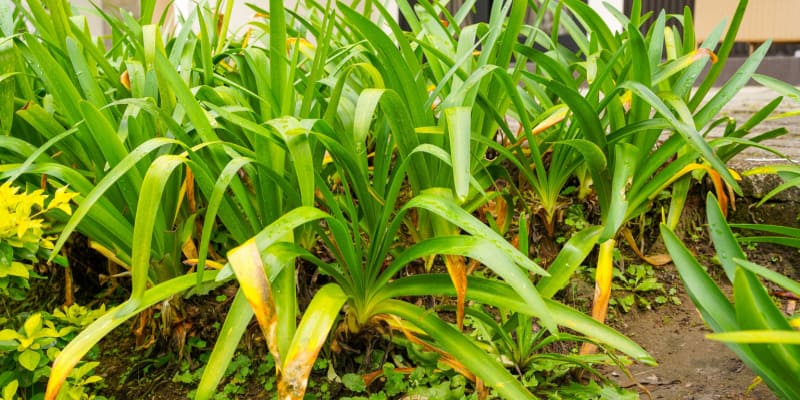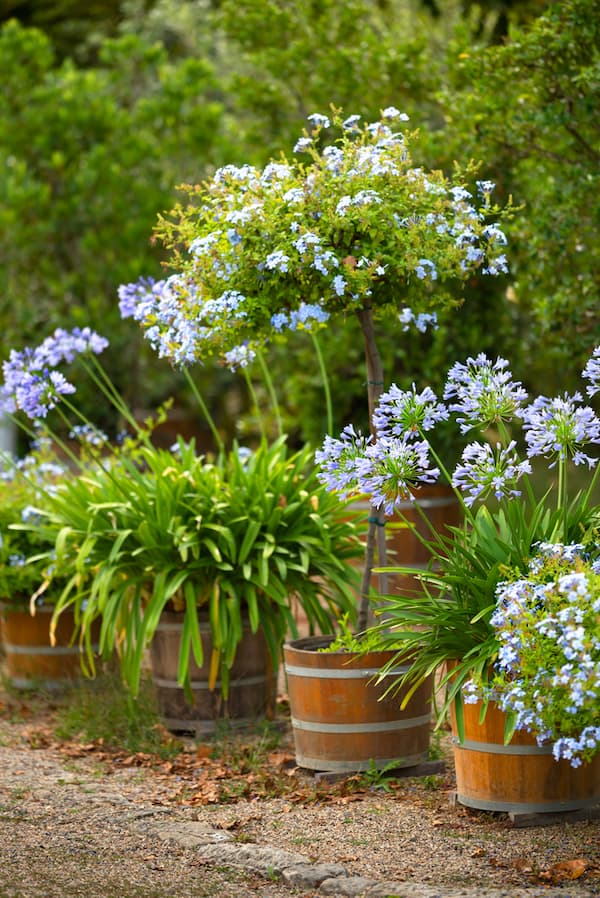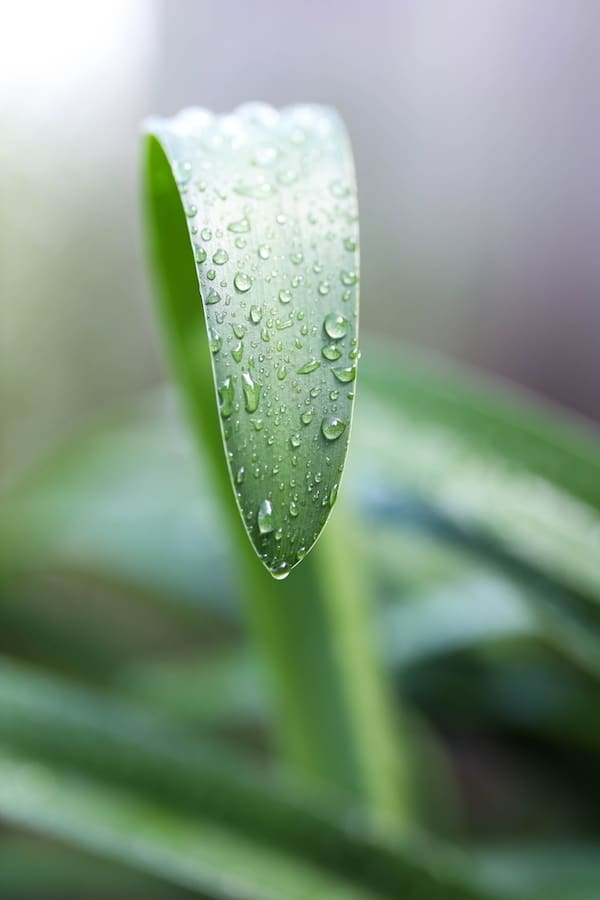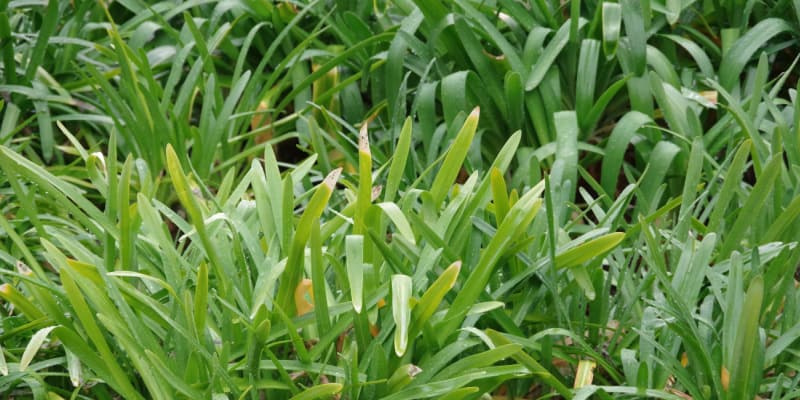
Why is my agapanthus (African lily) not flowering?
Our site is reader supported, this means we may earn a small commission from Amazon and other affiliates when you buy through links on our site.
The most common complaint I’ve come across in my 20 years as a professional gardener about their agapanthus is that the plant has masses of foliage but no flowers. Agapanthus is known to be quite a stubborn bloomer and susceptible to changes in its environment – both before and after blooming. If your agapanthus is not flowering or has very poor quality flowers or very few of them, here’s what to consider.
Hardiness of the agapanthus
There are deciduous agapanthus plants and evergreen ones. The evergreens are not as hardy as the deciduous ones, although still classed as hardy, so need more looking after, especially through the winter. If you have one of the evergreen varieties, check that you’re doing everything you should be.
What to do
Read How to grow and care for agapanthus plants for the information you need. In general, they need a sunny, sheltered position and well-drained soil. They also benefit from a layer of mulch around the base of the plant in winter to protect them from hard frost. It can also be beneficial to cover them in fleece in very cold, prolonged weather.
If growing them in pots, you should wrap the pot in bubble wrap or lagging to protect the roots. Ideally, you should move them into a cold greenhouse.
The wrong soil can result in a lack of flowers
Agapanthus aren’t too fussy about the soil they grow in, either in the garden or in a pot. But the soil does need excellent drainage. I recommend John Innes No.2 or No.3 compost mixed in with some grit for extra drainage. Check that the soil around your plant isn’t wet or soggy. There’s nothing like water-logged soil to encourage diseases into the plant, such as root rot that stops the agapanthus flowering and kills the roots and stems.
What to do
Repot the plant and change the soil around the plant if the soil is clumpy or compact. It may be enough to dig some horticultural grit into it.
Check the moisture in the soil that the plant’s in if the soil is wet, head over to Phytophthora Root Rot – prevention and treatment to learn what to do about this.
(It involves digging up the roots and cutting off the diseased ones, redoing the soil, replanting the plant and more.)
One other cause of poor flowering is some pests and diseases that attack the plant, including mealybugs. You can learn more about pests and diseases to watch out for.
Too much root room, they liked tightly packed roots
I’ve always thought that agapanthus plants are happiest when their roots are squished together as strange as that sounds. They say that these plants don’t bloom if they have too much room although I’m not sure why. (However, other experts disagree with this.)
What to do
Keep the pot the plant is in small but without creating a heavily compact root ball. Or, if the agapanthus is out in your garden, let the roots of the plants overlap each other.
Timing
This one’s to do with the natural life cycle of agapanthus plants, and the particular age of the plant you have.
Agapanthus often doesn’t bloom the first year you plant it – it’s a perennial after all. In addition, if it’s a plant that’s from the division of another plant, it may take a couple of years to settle in before producing flowers. And, agapanthus plants grown from seed can take up to four years to produce their first blooms.
What to do
If any of these situations apply to your plant, then just wait and be patient or purchase agapanthus that are already in flower.
Too much shade
Agapanthus plants love full sun and produce their best masses of flowers in that sunlight. While they can tolerate a few hours of partial shade each day, too much shade will stop them developing flowers. If your plant gets less than six hours of full sunlight each day, this may be the reason there are no flowers. The more sun they get the better.
What to do
Move your plant to a sunnier position. Of course, this is easier to do if it’s in a pot. For plants in the garden, can you cut down any other plants around them that are shading them? Or perhaps move the agapanthus to a new location in a different flower bed? With this additional sunlight, it’s more important than ever that the soil drains well so that the plant doesn’t rot in a waterlogged location.
Newly divided agapanthus can take a couple of years to flower
Dividing the agapanthus before the roots are firmly established can delay its ability to develop flowers by a few years.
What to do
Wait until your agapanthus is five years old before dividing it. This gives it time to fully establish its root system and create a crowded pot of roots. Any plant divided from the original plant has enough food stored in the roots for strong growth.
See How and when to divide agapanthus plants for all the details on how to do this.
Over-watering
As with any plant, over-watering can lead to root rot and harm the plant. Agapanthus, especially is vulnerable to this as it’s drought tolerant so doesn’t need much water once it’s established. And you can over-water your plant even if you’re giving it the correct amount of water if the soil isn’t draining adequately. Over-watering the plant leads to a lack of water in the leaves and flowers which then don’t develop properly. This causes yellowing leaves, as discussed in this guide.
What to do
Water the agapanthus regularly for its first growing season. Once the plant is established, water sparingly except for during dry spells.
Feel the top 10cm of the soil. If it’s dry, then water the plant thoroughly.
Trauma
Your agapanthus may experience trauma in its life that causes flowering to not happen. The flower buds for this year’s flowers formed inside the plant last summer and early autumn. If they didn’t form then, you won’t get any flowers now.
Did anything happen to your plant back then that may have caused that process to not happen or to happen incorrectly? Did your pet knock the plant over? Was it clipped in part by the lawn mower? Did you forget to water it for several weeks and then drench it in water to make up for the drought?
What to do
There’s nothing to do about this except be more careful this growing season.
Doesn’t like the scenery
I’ve said that agapanthus is prone to not liking its environment. And this may be the case for your agapanthus that’s not flowering, for some unknown reason.
What to do
If you don’t figure out what’s causing your plant to not flower, then just change its environment. If it’s in the ground in your flower bed, dig it up and put it in a pot; if it’s already in a pot, move it to a new location.
Maybe the sunlight in the new place is just what it wants, or maybe it turns out there was too much wind in the old location. Who knows? It’s worth a try.
Once you have successfully managed to get your agapanthus to flower, you can learn what to do with agapanthus after flowering here
